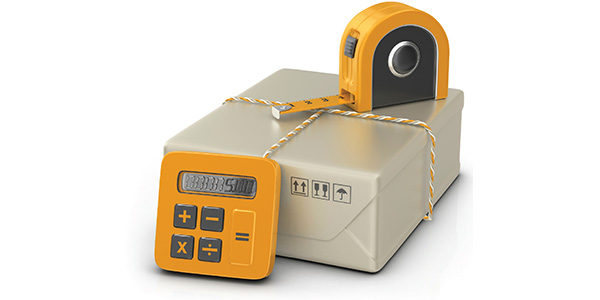
Due to the growth of ecommerce and an increase in items being shipped directly to consumers, UPS and FedEx began applying a new pricing method, dimensional (DIM) weight, for all Ground shipments in early 2015.
While dimensional weight pricing rules haven’t changed since it was implemented a year ago, many businesses reviewing their 2015 costs are now realizing the financial effect. Here’s a brief refresher on how this pricing methodology works.
Dimensional Weight Pricing Overview
The basic dimensional weight calculation has remained the same. Actual weight vs. package volume determines the billed rate.
Dimensional weight is when the size (in volume) of a package is compared to its actual weight determine the “weight” at which it’s rated. The length, width and height of the box are multiplied together and divided by a dimensional factor (UPS and FedEx use 166 for domestic shipments) to determine the dimensional weight. Shippers pay for whichever weight, actual or dimensional, is higher. For more information, check out this post.
Need an Example?
Think about a woman’s handbag with the dimensions 19” x 15” x 5” and an actual weight of two pounds.
- 19 x 15 x 5 = 1,425
- 1,425 / 166 = 8.58
Turns out, the dimensional weight of the handbag is nine pounds, since we have to round up.
This means the average rate across zones for Ground jumps from $9.01 (actual weight cost) to $11.50 (DIM weight cost). This results in an average cost increase of 27.6 percent. If you ship 50 packages per day per month, that’s an average increase of $2,490 per month.
For more examples, check out this post.
What Can Shippers Do to Identify Savings?
- Identify the package sizes and weights that your business commonly ships, and pay special attention to medium and large lightweight items. Determine if dimensional weight applies and calculate the shipping rate impact (including surcharges) to see if you should be on the lookout for alternative options.
- Look for opportunities to pack your shipments more efficiently and cost-effectively without risking damage to merchandise.
- Leverage USPS Priority Mail where it makes sense. This means utilizing Flat Rate and Regional Rate boxes if you can, and if you’re a high volume shipper, consider USPS Priority Mail Commercial Plus cubic rates.
For more shipping carrier news, check out our FedEx, UPS and USPS shipping page.
(Feature Image Source: DC Velocity)
About Endicia
Endicia is a leading provider of internet-based postage services that make it easier and more affordable to ship parcels through the U.S. Postal Service®. We know that shipping can be complex and our goal is to simplify your shipping operations so you can focus on doing what you do best. Visit us at www.endicia.com to learn more.



